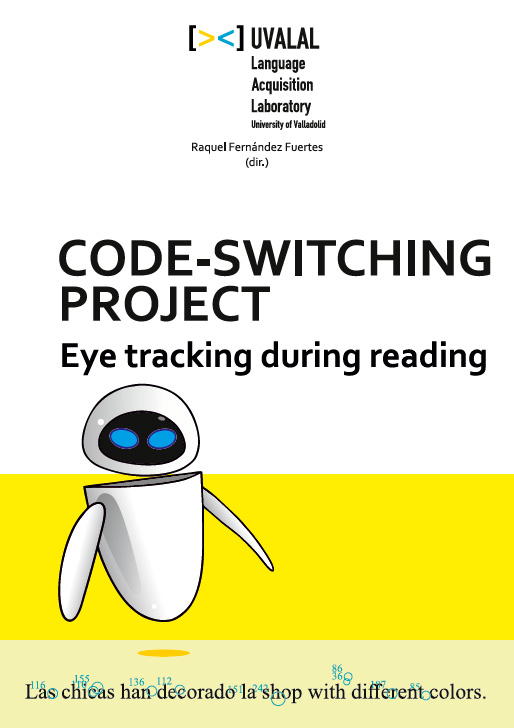
eye tracking_concord
- test: participants have to read in silence a series of sentences. Some of these sentences are in English, some in Spanish and some include English-Spanish codeswitching
- implementation: eyetracking methodology
- languages: English, Spanish
- participants
children: 33 (L1 Spanish-L2 English); 7 (L1 Spanish-heritage English)
adults: 32 (L1 Spanish-L2 English); 19 (L1 English-L2 Spanish);
9 (L1 Spanish-heritage English); 15 (L1 English-heritage Spanish) - objective: to explore how the properties of the two language systems interact in the mind of the bilingual; in particular, the focus is placed on the directionality of the switch and the type of implicit gender agreement mechanism in code-switched determiner phrases


eye tracking_S-V
- test: participants are presented with an image and a sentence about the image which they have to read in silence. Then they have to rate the sentence using a 1-to-4 scale presented by emoticons (1 = very bad; 4 = excellent)
- implementation: eye tracking methodology
- languages: English, Spanish
- participants
children: 24 (L1 Spanish-L2 English); 5 (L1 Spanish-heritage English)
adult: 12 (L1 English-heritage Spanish) - objective: to explore how the properties of the two language systems interact in the mind of the bilingual; in particular, the focus is set on subject-verb switches and on three issues: the directionality of the switch, the categorial nature of the subject as determiner phrase or pronoun, and the grammatical person in the case of the pronominal subjects
